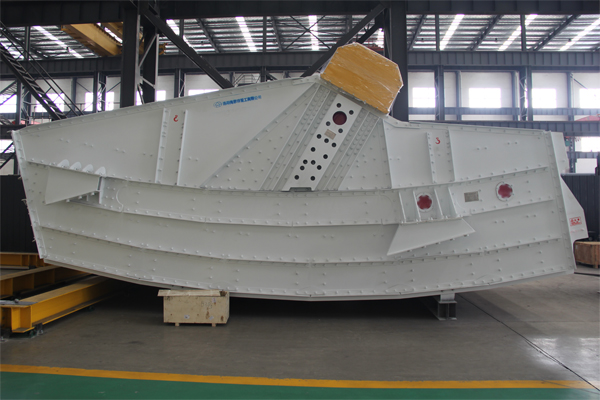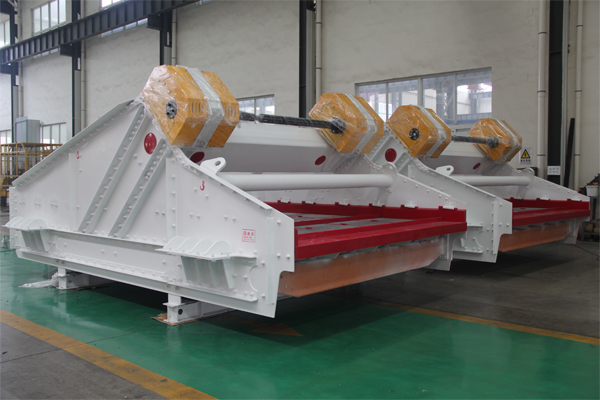How to improve screening efficiency with banana screens
Banana screens are known for their high screening efficiency, particularly for materials with a high percentage of fines or high moisture content. Their multi-slope design, resembling a banana, allows for rapid stratification and efficient separation.
How to improve screening efficiency with banana screens

1. Optimize Screen Parameters:
Adjust Inclination Angle: Banana screens have varying inclination angles along their length. The steep angle at the feed end allows material to move quickly and stratify, while the gentler angle at the discharge end slows it down, giving finer particles more time to pass through. Experiment with these angles to find the optimal settings for your specific material and desired separation. Studies suggest that an inclination of 10° at the discharge end with a 5° increment across the screen can be highly effective.
Vibration Parameters: Fine-tuning the amplitude and frequency of vibration is crucial.
Amplitude: Increasing the amplitude can improve screening efficiency for larger particles, while reducing it might be better for finer particles.
Frequency: Higher frequencies can improve screening efficiency by causing material to move more quickly and reducing clogging, but also consider potential increases in noise and wear.
Vibrating Direction Angle: Adjusting the angle of the eccentric block (e.g., 30° to 90°) can change the proportion of horizontal and vertical exciting force, creating an elliptical vibration track that enhances material throwing and screening, especially for high humidity or viscous materials.
2. Optimize Feed Management:
Uniform and Consistent Feeding: Ensure the material is fed evenly across the entire width of the screen. Uneven loading can lead to reduced efficiency and premature wear. Use feeders, chutes, or baffles to distribute the material uniformly.
Controlled Feed Rate: Avoid overloading or under-utilizing the screen’s capacity. Too much material can cause clogging, while too little can lead to inefficient screening. Adjust the feed rate to match the screen’s capabilities and the material’s flowability and density.
Feed Preparation: Properly condition the feed material. Adjust moisture content and particle size distribution to prevent blinding, pegging, or uneven bed formation. For wet screening, optimize water flow rate and spray patterns.
3. Choose and Maintain Screen Media:
Appropriate Screen Aperture/Mesh Size: Select the right mesh size to match the particle size distribution of the material being processed. This directly impacts screening accuracy and throughput.
Screen Panel Material: Consider factors like wear resistance and open area when selecting screen panels (e.g., woven wedge wire, polyurethane, rubber modular panels). High opening rates generally lead to higher screening efficiency, but might reduce screen life.
Reduce Blinding and Clogging: Banana screens are designed to reduce blinding due to their multi-slope design. However, if it occurs, consider using screen cleaning devices like sliders, ball trays, or ultrasonic deblinding systems. Using screens with self-cleaning properties, such as tapered openings, can also help.
Regular Inspection and Replacement: Regularly inspect screen panels for wear, damage, or blockages. Promptly clean or replace damaged or worn-out panels to maintain optimal aperture openings and efficiency.

4. Implement Robust Maintenance Practices:
Regular Inspections: Conduct daily, weekly, and monthly inspections of all components, including the screen deck, side plates, cross members, vibrating components (springs, bearings, vibrator mounting bolts), feed/discharge areas, and structural integrity.
Lubrication: Ensure proper lubrication of bearings and other transmission components (gears, sprockets) according to the manufacturer’s recommendations.
Cleanliness: Regularly clean residual material from the screen surface, gaps, and around the vibrator to prevent corrosion and ensure smooth operation.
Bolt Tightness: Check all bolts for tightness and re-tighten any that are loose.
Vibration Analysis: Periodically perform vibration analysis to identify imbalances, misalignment, or other issues affecting performance. This can help in proactive maintenance.
Address Issues Promptly: Respond quickly to signs of reduced efficiency, abnormal noise, misalignment, or motor overheating. Timely repairs prevent minor issues from becoming costly breakdowns.
5. Leverage Technology and Data:
Real-time Monitoring: Implement systems to track key performance indicators like feed rate, vibration parameters, and product quality.
Data Analytics: Utilize data to identify opportunities for optimization and predictive maintenance, allowing you to refine operating parameters.
Simulation Software: Some scholars use simulation software (like Discrete Element Method – DEM) to model screening structure characteristics and explore how screening parameters impact efficiency. This can help in optimizing parameters virtually.
By carefully considering and implementing these strategies, you can significantly enhance the screening efficiency and overall performance of your banana screens.



